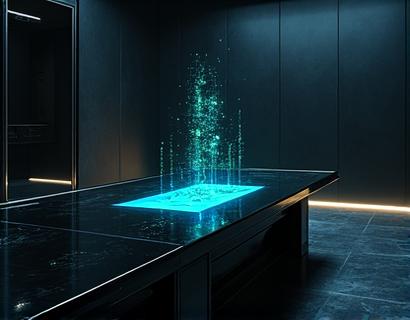Effortless Online Graphic Design: Empowering Creatives with Intuitive Tools
In the digital age, the ability to create compelling visual content has become an essential skill for professionals and enthusiasts alike. Whether you're a seasoned graphic designer or just starting out, the process of designing stunning visuals can often seem daunting. However, with the advent of intuitive online graphic design tools, the barrier to entry has significantly lowered, making it easier than ever to craft eye-catching images, social media posts, and marketing materials. This article delves into the world of these innovative tools, highlighting how they simplify the design process and empower creatives to elevate their brand's visual presence effortlessly.
The Need for Intuitive Design Tools
The traditional graphic design process involves a steep learning curve, requiring extensive knowledge of design software, color theory, and layout principles. While this expertise is invaluable, it can be overwhelming for those new to design or those who need quick, efficient solutions. The rise of intuitive online graphic design tools addresses this need by providing user-friendly interfaces and streamlined workflows. These tools are designed to be accessible, allowing users to focus on creativity rather than getting bogged down by complex software.
Key Features of Intuitive Design Platforms
One of the most significant advantages of modern online graphic design tools is their comprehensive feature sets, all wrapped in an intuitive interface. These platforms typically include:
- Customizable Templates: Starting with a pre-designed template can save hours of setup time. These templates are professionally crafted and can be tailored to fit specific brand guidelines or project requirements.
- Vast Library of Design Elements: From icons and illustrations to fonts and color palettes, these tools offer a rich library of design elements. This ensures that users have everything they need to create cohesive and visually appealing content without leaving the platform.
- Drag-and-Drop Functionality: The drag-and-drop interface makes it easy to arrange elements on the canvas. This feature is particularly beneficial for beginners who may not be familiar with keyboard shortcuts or complex menu navigations.
- Real-Time Previews: Seeing how your design will look in real-time is crucial. These tools provide live previews, allowing users to make adjustments on the fly and ensure the final product meets their expectations.
- Collaboration Tools: For teams, the ability to collaborate in real-time is a game-changer. These platforms often include features that allow multiple users to work on the same project simultaneously, streamlining the workflow and enhancing productivity.
Benefits for Professionals and Beginners
The benefits of using intuitive online graphic design tools are manifold, catering to both professional designers and those new to the field.
For Professionals:
Experienced designers can leverage these tools to enhance their productivity and expand their service offerings. With the ability to quickly create high-quality visuals, professionals can take on more projects without sacrificing quality. Additionally, these tools often integrate seamlessly with other professional software, making them a valuable addition to any designer's toolkit.
For Beginners:
For those just starting their design journey, intuitive online tools are a stepping stone to learning and mastering graphic design. The guided templates and step-by-step processes help beginners understand fundamental design principles without feeling overwhelmed. This accessibility encourages more people to explore their creative side and develop valuable skills.
Enhancing Brand Visual Identity
Consistent and high-quality visual content is crucial for building and maintaining a strong brand identity. Intuitive design tools empower businesses and individuals to create a cohesive visual language that resonates with their audience. Here’s how these tools can help:
Firstly, customizable templates ensure that brand guidelines are easily implemented. Whether it’s a specific color scheme, typography, or layout, these templates can be adjusted to fit any brand’s unique identity. Secondly, the vast library of design elements allows for the creation of consistent visual motifs, such as icons and graphics, which reinforce brand recognition. Lastly, the ability to produce high-quality images and social media posts ensures that all brand touchpoints are professional and engaging.
Boosting Social Media Presence
In the realm of social media, visual content reigns supreme. Posts with high-quality images and well-designed graphics tend to perform better, garnering more engagement and reaching a wider audience. Intuitive design tools make it easy to create content tailored for various social media platforms. Features like aspect ratio adjustments and platform-specific templates ensure that your content looks great, no matter where it’s posted. This capability is particularly valuable for businesses and influencers who need to maintain an active and visually appealing presence across multiple platforms.
Streamlining Marketing Materials
Marketing materials such as flyers, brochures, and email campaigns require a professional touch to be effective. Intuitive design tools simplify this process by providing templates and design elements that can be easily customized. This not only saves time but also ensures that the materials are visually consistent with other brand assets. For small businesses and freelancers, this means they can produce marketing materials that compete with those of larger companies, all without the need for a full design studio.
Case Studies and Real-World Applications
To better understand the impact of intuitive design tools, let’s look at a few real-world applications:
A marketing agency, for instance, used an online design platform to create social media ads for a new client. The team was able to design and deploy a series of ads within a tight deadline, thanks to the platform’s drag-and-drop interface and pre-designed templates. The client was impressed with the quality and professionalism of the work, leading to a long-term partnership.
Another example is a small business owner who used the same tool to redesign their website’s header images and email newsletters. The new visuals not only improved the site’s aesthetics but also resulted in a 20% increase in email open rates, demonstrating the direct impact of high-quality visual content on user engagement.
Future Trends in Online Graphic Design
The landscape of online graphic design is continually evolving, with new trends and technologies emerging regularly. Here are a few areas to watch:
- AI Integration: Artificial intelligence is starting to play a role in design tools, offering features like automated layout suggestions and color palette generation. This can further enhance the design process, making it even more intuitive and efficient.
- Cloud-Based Collaboration: As more users work remotely, cloud-based collaboration tools are becoming essential. Future platforms will likely focus on enhancing these features, allowing for seamless teamwork regardless of location.
- Augmented Reality (AR) and Virtual Reality (VR): These technologies are beginning to influence graphic design, particularly in creating immersive experiences. Design tools that support AR and VR could become increasingly popular, opening new avenues for creative expression.
Conclusion
The advent of intuitive online graphic design tools has democratized the design process, making it accessible to a broader audience. These platforms offer a blend of professional features and user-friendly interfaces, empowering both seasoned designers and newcomers to create stunning visuals with ease. By leveraging customizable templates and a comprehensive library of design elements, users can elevate their brand’s visual presence and enhance their marketing efforts. As technology continues to advance, the future of online graphic design looks brighter and more innovative than ever.










































